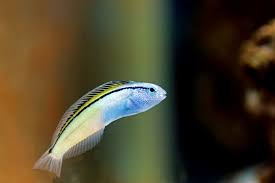
Dragons, majestic creatures imbued with power and mystery, appear in various forms across cultures worldwide. While often regarded as symbols of danger, destruction, or guardianship, in many agricultural societies, dragons have also been linked with fertility, rain, and bountiful harvests. The legends of dragons in agricultural stories emphasize their critical roles as harbingers of good fortune, ensuring the well-being of crops, the success of farming endeavors, and the prosperity of entire communities. This article delves into the legend of dragons in agricultural stories, exploring their connection with farming traditions, the symbolism behind their appearances, and the influence they have had on ancient and modern agricultural practices.
1. The Agricultural Importance of Dragons
In many ancient cultures, the dragon is seen as a natural force, deeply connected with the elements, especially water and rain. As rain is essential for agriculture, many societies adopted the dragon as a symbol of rainmaking, believing that these mythical creatures had the power to control weather patterns and ensure good harvests.
In societies reliant on agriculture for their survival, the role of dragons in myths was not just symbolic, but practical. Stories of dragons controlling water, bringing rain, and fostering plant growth were central to the relationship between human beings and the land they cultivated. The appearance of a dragon in these tales often signified the arrival of a season of prosperity or the rejuvenation of the earth after a period of drought or famine.
2. Chinese Dragons and Their Role in Agriculture
In Chinese culture, the dragon is one of the most powerful and auspicious symbols, often linked with good fortune, wealth, and prosperity. Historically, Chinese farmers viewed the dragon as a protector of crops and a bringer of rain, essential for the cultivation of rice, wheat, and other vital crops.
The Dragon and the Rain
One of the most prevalent legends in Chinese mythology involves the dragon’s control over rainfall. According to traditional beliefs, the dragon is the master of water, and its actions influence the flow of rivers, lakes, and seas. The legend of the Dragon Kings—five powerful dragon deities who ruled over different bodies of water—illustrates the dragon’s connection to water management. These kings were thought to be able to summon rain, vital for the crops that sustained the people.
In times of drought, it was believed that farmers could perform rituals to invoke the dragon gods and ask for rain. The most significant of these ceremonies was the Dragon Boat Festival, which included dragon boat races, offerings to the Dragon Kings, and prayers for a successful harvest. The festival’s roots lie in the idea that the dragons’ favor would ensure a bountiful harvest by providing much-needed rainfall.
The Dragon as a Symbol of Fertility
In addition to its rainmaking abilities, the Chinese dragon is also associated with fertility and abundance. Dragons in Chinese folklore often symbolize the nurturing and sustaining force of nature, which is essential for crops to thrive. In some myths, the dragon would perform tasks such as plowing the fields or guarding the crops, ensuring their growth and prosperity.
The Role of the Dragon in the Zodiac
The Chinese zodiac includes the Dragon as one of its 12 signs, symbolizing strength, vitality, and good fortune. People born in the Year of the Dragon are considered to be blessed with good luck and the ability to influence the course of events, much like the dragon itself. The connection between the Dragon in the zodiac and the land extends to the belief that those born in the Year of the Dragon bring prosperity to their families and communities, akin to the dragon’s role in ensuring agricultural success.
3. The Role of Dragons in Japanese Agricultural Myths
In Japanese mythology, dragons are similarly linked with water and agriculture. The most famous dragon deity in Japan is Ryujin, the dragon god of the sea and ruler of all aquatic creatures. Ryujin is believed to possess the power to control rainfall and tides, influencing the agricultural calendar and ensuring crops receive adequate water.
Ryujin and the Sea
Ryujin’s connection to agriculture is rooted in Japan’s reliance on both rice cultivation and fishing. It was believed that Ryujin’s power could regulate the rain, enabling farmers to grow rice and other essential crops. In one tale, Ryujin’s daughter, Otohime, is said to have helped a fisherman, and in gratitude, he built a shrine to Ryujin, praying for abundant harvests. This highlights the dragon’s essential role in ensuring the fertility of both land and sea.
Japanese legends also mention that Ryujin, who was thought to reside in an underwater palace, could control the rain by shaking his magnificent dragon body. When the rains were scarce, it was said that the dragon would calm the waters; when the rains were plentiful, the dragon would stir the sea to create heavy rainfall, benefiting crops and agriculture.
Dragons in Agricultural Festivals
Just as in China, Japan celebrates its dragon deities through festivals and rituals designed to ensure bountiful harvests. The Awa Odori, a traditional dance festival, incorporates elements of the dragon dance, symbolizing the agricultural significance of the dragon in the country’s agrarian traditions.
4. Dragons in Vietnamese Agriculture Myths
In Vietnam, the dragon plays a similarly vital role in agricultural myths. The Vietnamese dragon, or Long, is a symbol of prosperity, fertility, and rain. In ancient Vietnamese folklore, the dragon was often seen as a protector of the fields, providing the much-needed water for crops to grow and flourish.
The Legend of the Dragon and the Rice Fields
One famous Vietnamese myth tells of the dragon’s assistance to farmers in times of need. During a prolonged drought, the dragon, moved by the farmers’ plight, emerged from the sky and brought forth rain, revitalizing the rice fields and ensuring a bountiful harvest. This act of kindness cemented the dragon’s place as a sacred protector of the earth’s fertility, a belief that continues in Vietnamese farming communities to this day.
The Dragon and the Lunar New Year
The Vietnamese Lunar New Year, known as Tết, incorporates dragon imagery in various ways, especially in relation to the harvest cycle. The dragon is not only a symbol of good fortune but is also associated with agricultural prosperity. As families prepare for the Tết celebrations, they often pray to the dragon for a good year of crops, hoping for favorable weather conditions, abundant harvests, and the continued prosperity of their community.
5. European Dragons and Agricultural Stories
In European folklore, dragons are often viewed with suspicion, and their association with agriculture is somewhat less direct than in Eastern cultures. However, there are still instances in which dragons are involved in agricultural tales, particularly in terms of their relationship with the land’s fertility and protection.
The Role of Dragons in European Fertility Myths
In some European myths, dragons are depicted as protectors of treasures, which often include the fertile lands or fields that provide sustenance to communities. One such legend tells of a dragon that guards a mystical spring of water that is vital for the land’s fertility. Farmers would seek out the dragon to appease it in exchange for a season of prosperous harvests.
The idea that dragons had the power to either bring abundance or destruction, depending on how they were treated by humans, permeates European agricultural myths. In this context, dragons symbolize the unpredictable and uncontrollable forces of nature, with the ability to either nurture or harm the crops depending on their moods.
6. Modern Interpretations and the Continued Reverence for Dragons in Agriculture
While the role of dragons in agriculture myths may seem less relevant in today’s technologically advanced world, their symbolism remains present in various agricultural practices and festivals. The reverence for the dragon as a bringer of rain, protector of crops, and symbol of fertility persists, particularly in cultural traditions that are closely tied to the earth and its cycles.
Modern Agricultural Festivals
In both Eastern and Western cultures, modern agricultural festivals continue to feature dragon symbolism. These festivals often include dragon dances, dragon parades, and dragon-shaped decorations, celebrating the historic connection between dragons and the prosperity of the land. In some regions, farmers still invoke the dragon’s blessings for successful harvests, using the legend as a way to connect with the forces of nature and the cycles of the earth.
7. Conclusion: The Enduring Influence of the Dragon on Agriculture
Dragons, often viewed as symbols of chaos or destruction, are in fact deeply entwined with the themes of fertility, growth, and prosperity in agricultural cultures around the world. Through the legends of these mighty creatures, we understand the human desire to connect with the forces of nature, to honor and seek favor from those powers that govern the land and its cycles. The dragon continues to be a potent symbol of the forces that shape the agricultural world, ensuring that its mythic power remains alive in cultural practices, rituals, and beliefs that persist to this day. Whether in China, Japan, Vietnam, or Europe, the dragon stands as a timeless protector of the earth’s fertility, guarding the promise of bountiful harvests and agricultural success.









